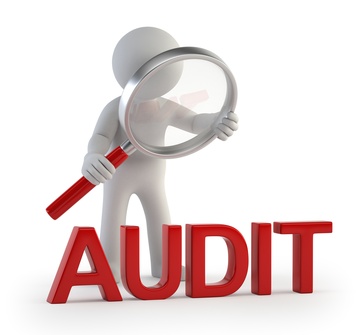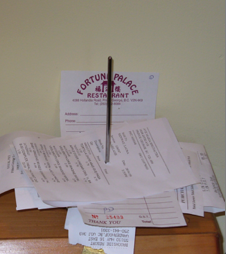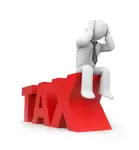- Essential Bookkeeping Habits For Audit Ready Books in Canada
- GST HST In Canada
- CRA GST Invoicing Requirements
CRA GST Invoicing Requirements
CRA HST Invoicing Requirements
How To Avoid Disallowed Input Tax Credits
By L.Kenway BComm CPB Retired
This is the year you get all your ducks in a row! Start by starting.
Edited May 13, 2024 | Updated April 11, 2024 | Originally published on Bookkeeping-Essentials.com in 2010
The taxpayer bears the burden of proof, which means being able to present adequate documentation to support the self-employed tax deduction claimed on your tax return. Learn best invoicing practices to make your books audit ready and avoid disallowed input tax credits.
Quick Links For This Post
- What is a legitimate business receipt for CRA purposes?
- Three choices on how to present the sales tax and point of sales rebate on your sales receipt.
- BEST practice for customer invoices & receipts
- Make a habit to do this
- Exceptions To CRA GST Invoicing Requirements
- No Receipt No Deduction clearing account
- Are credit card statements valid receipts?
- FAQ about CRA GST invoicing requirements
NEXT IN SERIES >> Place of Supply Rules: Charge The Right Rate!
What Is A Legitimate Business Receipt For CRA Purposes?
 Will your business receipt pass a GST HST audit?
Will your business receipt pass a GST HST audit?The best way to do this is keep all of your receipts and make sure the receipts are legible. The tax assessor (and your bookkeeper) needs to be able to read the receipt. Bottom line, if the receipt can't be read, it is not considered to be a supporting document ... which means you will lose the tax deduction.
It's a good idea to keep the original receipt but scan or photocopy your receipts (proof of purchase) along with a copies of your bank and credit card statements (third party proof of payment).
The next thing you need to be cognizant of is if your receipt will meet CRA GST invoicing requirements and be accepted by an auditor during a sales tax audit.
A legitimate business receipt for CRA purposes must contain:
- Sales under $30 (be sure to check out "Do This" tip below)
- Name of the business
- Their address
- Their phone number
- The transaction date
- The total amount of the transaction
- Sales between $30 and $150
- All of the above plus
- An indication that you have paid the amount shown
- An indication of which items are taxable and which rate
- Their GST/HST number, if they are registered
- Sales $150 and more
- All of the above plus
- Buyer's name
- A description of your purchase
- Terms of payment
Although the above list shows the invoice/receipt doesn't need a description unless the purchase is over $150, the auditor could still ask you to prove it was a business expense. Make it a habit to just add the description anyway.
Presenting Point Of Sale Rebates | Customer Invoices-Receipts
During a GST HST audit, expect to have GST HST rebates audited as well ... particularly if the self-employed business owner is building a personal residence where the new housing rebate can be claimed.
Check to make sure your invoices or receipts meet CRA standards so that none of your customers lose deductions because your sales invoice did not provide them with an adequate audit trail.
Business owners ... if your business has point of sale rebates, you have three choices on how to present the sales tax and point of sales rebate on your sales receipt.
- Show full amount of HST with any point of sale rebate(s) identified on a separate line.
- Show only the federal portion of the HST ... meaning you do not need to reflect the point of sale rebate on the invoice.
- Show pricing including HST with a notation of how much net tax was paid ... the way service station invoices for gas purchases report GST now.
Reference: CRA Publication B-080R Rebates of HST on Supplies Made From the Participating Provinces.
CRA GST Invoicing Requirements
Best Practice When Preparing Customer Invoices & Receipts
A best practice when issuing invoices and receipts to your own customers is to identify and separate the individual sales taxes clearly. Have your GST HST registration number visible on your invoice.
Canada introduced different provincial HST rates in July 2010. Prior to this it was just GST at one rate across Canada. Your invoices and receipts should indicate the tax rate ... for example if it is an Ontario customer, HST @ 13% or GST/HST @ 13%. If it is an Alberta customer, GST @ 5% or GST/HST @ 5%.
For provinces that charge GST + PST such as B.C., the invoice should list the two taxes separately ... for example, GST @ 5% on one line and PST @ 7% on the next line. Do NOT combine the two as they are different taxes - one federal and one provincial!
This good bookkeeping practice makes it easy for your customers to create their audit trail. It will also make your bookkeeper's data entry easier, faster, more efficient ... which keeps more money in your pocket. The bonus is it meets CRA GST invoicing requirements. Your customer should have no trouble claiming their input tax credits.
Make It A Habit To Do This
 Write descriptions on back of paper receipts
Write descriptions on back of paper receiptsSometimes till receipts, especially those under $30, do not have a description of your purchase or the description does not have any meaning to the customer.
In these instances, write on the back what the purchase was for. The auditor needs to know it was related to your business ... and I guarantee you won't have clue come audit time if you haven't followed this habit.
I can't tell you the amount of times I've googled a till receipt description for a store to see if anything comes up to describe what the purchase was! It doesn't always work.
No Receipt No Deduction (NRND) Clearing Account
The consequences of not having receipts for an audit are simple ... no receipt - no deduction.
Back in 2012 the CRA routinely denied input tax credits (ITCs) on the basis of insufficient documentary support. I would be surprised if this is still not the case today.
I used to setup a NRND Clearing Account on the balance sheet in my clients books. I coded all transactions that did not have supporting documentation there.
Each business owner was responsible to review the account and hunt down the missing supporting documents. Once I had that in hand, I cleared the transaction out the NRND Clearing Account to the proper expense account.
At year-end, expenses without supporting documentation were reviewed to determine if the expense can be claimed without claiming the ITC, it met one of CRA's ITC documentation exceptions, or if it should be cleared to the Owners Draw account.
This practice helped me create an audit ready set of books for my clients.
Exceptions To CRA GST Invoicing Requirements
CRA does allow some exceptions to invoice requirements. The reduced invoice requirements pertain to the information your books must capture under the following categories:
- unvouchered cash payments where documentary evidence is not available - record in books identifying place, date, amount paid, GST HST paid, description and quantity.
- computerized books and records where documentary evidence is not available - maintain books to capture supplier name, GST HST registration number, date of payment, recipient's name, nature of the expense.
- contractual arrangements where documentary evidence is not available - maintain books to capture supplier name, GST HST registration number, date of payment, recipient's name, nature of the expense.
- reimbursements of meal and entertainment expenses - read the CRA publication
- reimbursement of expenses - read the CRA publication
- allowances - GST HST registration number of employer, name of person who received the payment, amount received, GST HST deemed paid, description of the allowance, its purpose and tax status.
- taxi or limousine fares - don't need the GST HST registration number on amounts over $30 but must have receipt.
Reference: CRA Publication GST/HST memorandum 8.4 Documentary Requirements for Claiming Input Tax Credits
--- Wrap Up ---
I like to stress that you set up your bookkeeping system for audit proofing ... right from the start. Take the extra time to create an audit trail. MAKE IT A COMPLIANCE HABIT! If ... no, when ... you are eventually audited, you will be thankful you did. Those pennies can add up to a pretty hefty tax bill when numerous expenses and ITCs are denied.
CRA GST Invoicing Requirements
What Is NOT A Legitimate Receipt For Tax Purposes
It is just as important for a small business owner to understand what documents do not meet CRA GST invoicing requirements as the ones that do.
A question often asked is, "Are credit card statements valid receipts?". The short answer is no, the credit card statement must be supported by another document (e.g., a credit card receipt, an invoice) to entitle the registrant to claim an ITC.
 Proof of payment is different than proof of purchase. You need both!
Proof of payment is different than proof of purchase. You need both!The statement only shows what you paid not what was bought and why it should be a business deduction. But statements are still an important third party source document that shows proof of payment.
Let's look at why a credit card statement (or a bank statement) is not the same as a receipt.
Let's say you purchased gas for your vehicle on your credit card. It shows up on your statement. How can the CRA have a problem with that?
Hmmm, have you ever bought candy bars, chips, smokes, lotto tickets when paying for your gas? Was the gas for your car ... or your spouse's vehicle?
You can see that just having an expense from a gas station on your credit card statement does not mean you purchased only gas for your vehicle ... and therefore a credit card statement is not an acceptable audit trail to determine if gas was purchased for your business trip. But hold on ... don't throw it out!
What's important here is to not confuse proof of payment with a valid receipt which shows proof of purchase ... you NEED BOTH for an adequate audit trail!
What about credit card slips and debit card slips? Sorry, your credit card slips and debit card slips are not valid receipts on their own. They only show payment of the amount ... which is only one item on the list of criteria ... so don't throw them away! Each payment slip should be attached to the actual receipt of what was purchased.
Some cash register receipts show what you purchased and how you paid for it on the same receipt. I really love the businesses that have this system in place.
Cancelled cheques, credit card statements, and bank statements are great to construct (or re-construct) your bookkeeping records. However in Canada, they are not considered to be a legitimate business receipt for the purpose of claiming input tax credits. Just like debit and credit card slips, you need them in addition to your receipt, to show proof of payment ... and they are third party source documents.
Why are third party source documents important to an auditor? Third party source documents provide the auditor with verification of the transaction from an outside third party ... an excellent audit trail.
If you are wondering if the CRA (Revenue Canada) accepts photo receipts, click here for more information.

FAQ About CRA's GST HST Invoicing Requirements

What are the CRA rules pertaining to HST displayed on customer invoices? How do I invoice for harmonized sales tax?
What are the CRA rules pertaining to HST displayed on customer invoices? How do I invoice for harmonized sales tax?
The same rules for GST apply to HST. You have three invoicing presentation options. All three take point of sale rebates into consideration.
How do you enter HST into QuickBooks? How do I track meals and entertainment ITCs? How do I track the GST/HST rebate for non-profits?
How do you enter HST into QuickBooks? How do I track meals and entertainment ITCs? How do I track the GST/HST rebate for non-profits?
Check out the Intuit's excellent walkthrough on How to set up HST for my Charity/Non-profit business in Ontario? It includes including split transactions used by Not For Profits ... which can also be applied recording meals and entertainment expenses.
That said, Inuit has great instructions for how to setup a sales tax rate for Meals and Entertainment.
How do I track temporary recapture of ITC in Ontario? How do I do the accounting for HST ITC recapture?
How do I track temporary recapture of ITC in Ontario? How do I do the accounting for HST ITC recapture?
Check out the Intuit's excellent walkthrough on How do I set up HST to include an RITC tax code for my Ontario business?
Large businesses (taxable supplies over $10 million annually) that have their input tax credits restricted are: telecommunications, energy, certain road vehicles and related services, as well as food, beverages and entertainment.
Capturing RITC requires a manual setup. Intuit's PDF instructions include the following steps which they explain in depth:
- Setup a New Tax Vendor - call it Receiver General Non-Taxable
- Setup 4 New Sales Tax Items - assign the Vendor to the tax items GST ITC, HST ITC 8%, RITC 8%, RITC Expense
- Setup a New Sales Tax Group - create a tax group called RITC Tax using the sales tax items created
- Setup and Assign a New Sales Tax Code - RH tracks the tax group
Do we pay GST and PST on parking in British Columbia?
Do we pay GST and PST on parking in British Columbia?
A good way to know whether GST HST is included in the paid parking ticket amount is to see if the receipt references a GST HST registration number. If it does, then you definitely want to enter the receipt inclusive of tax.
In B.C. parking not only attracts GST, but I believe in Metro Vancouver there is also a 24% Translink parking tax. The parking tax also attracts GST.
Parking does not attract PST in B.C.








